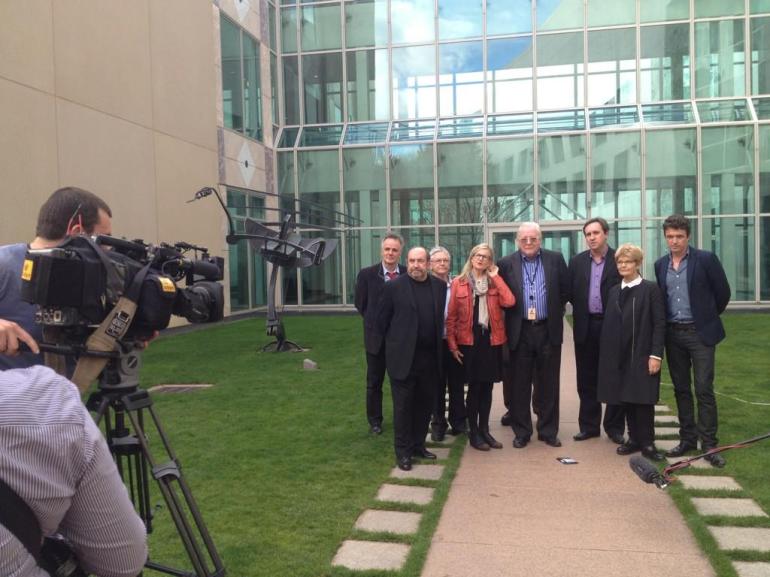The Australian screen industry is lobbying the Federal Government to implement two key Convergence Review recommendations that would bolster the level of Australian content on free-to-air and pay-TV.
High-profile screen industry practioners descended on Canberra today including actors Roy Billing, Simon Burke and Matt Day; producers Penny Chapman and Brian Rosen; writers Tim Pye, Roger Simpson and John Collee; and directors Gillian Armstrong, Rowan Woods and Ray Argall.
Screen Producers Association of Australia (SPAA) president Brian Rosen said the Convergence Review report, delivered in March, recommended that the current Australian Content Standard be extended to the new digital multi-channel environment and the pay-TV platform. "We were told that the government supported this move but, six months later, the lack of progress has us worried,” Rosen said in a statement.
Other guilds and industry bodies to express concern about the future of local content regulation included the Australian Directors Guild (ADG), the Australian Writers’ Guild (AWG) and the Media, Entertainment & Arts Alliance (MEAA).
ADG president Ray Argall said the guild was concerned that commercial FTA broadcasters have been lobbying the government to not impose any additional Australian content obligations on them because of the tough economic environment.
“Nine Network CEO David Gyngell was quoted in the media recently saying that ‘there’s more people watching free-to-air and pay-TV hours this year than ever there has been before. …. The industry as a whole is probably making more money than it's ever made before.’," Argall said in a statement. "The networks can’t have it both ways. They need to acknowledge their obligations to the Australian community and accept that local content regulation on digital multi-channels and pay-TV is vital if audiences are to see acceptable levels of Australian programming on these platforms.”
The screen industry is specifically recommending that the government implement the Convergence Review's recommendation to extend the FTA broadcaster's local content quotas to their digital multi-channels at half the level required on their main channels; and that children’s and documentary pay-TV channels spend the equivalent of 10 per cent of their acquisition budgets on first release Australian programs.
MEAA president Simon Burke warned that local TV screens would be flooded with foreign imports if the local content regulation regime was not extended to cover new digital broadcast platforms.
However, a spokesperson for the Australian Subscription Television and Radio Association (ASTRA) said that the industry contributes significantly to the development of Australian producers, actors, writers and other creative talent like no other medium through its niche programming.
"Subscription TV invested $578.4 million in Australian content in 2010, a 7 per cent increase from 2009, including popular local formats and genres including news, sport, drama, light entertainment, movies, lifestyle, documentaries, music and children’s programming.”
Contact this reporter at bswift@www.if.com.au or on Twitter at @bcswift.
Screen industry representatives in Canberra (posted by @SPAA_News)



